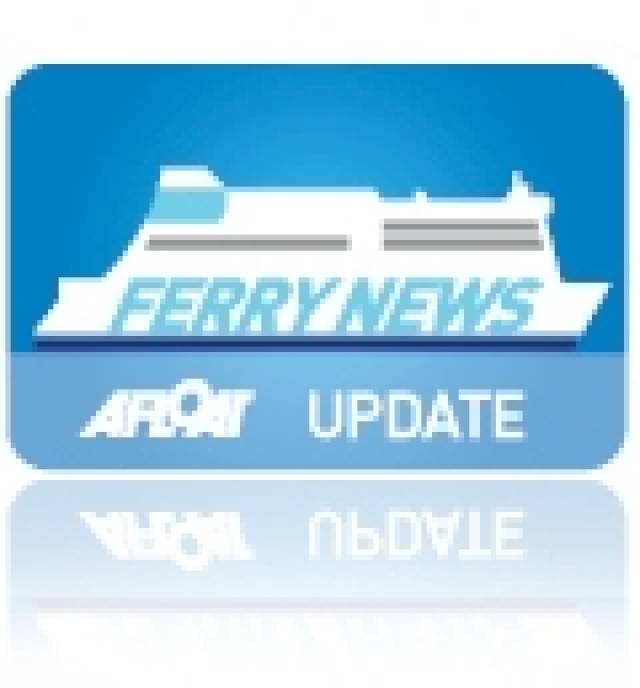#SuperfastXLaunch – Stena Line Chairman Dan Sten Olsson alongside broadcast personality Kathryn Thomas, the ferry Godmother of Stena Superfast X (pronounced 10) named the Dublin-Holyhead route's new ferry yesterday, writes Jehan Ashmore.
More than 170 guests attended the official launch ceremony in Dublin Port where Kathryn and the chairman jointly pressed a red button to unveil a nameplate in the Stena Plus Lounge.
The Dublin Welsh Male Voice Choir aptly sang 'Ireland's Call' given Stena Superfast X's launch on the core Irish Sea route and forthcoming RBS 6 Nations fixture between Ireland and Wales to be held in Cardiff, incidentally the Welsh capital is where the 30,285 tonnes ferry is registered.
Stena Superfast X was berthed at Dublin Port's Ferry Terminal 2 from where the double-tier ro-ro linkspan has already been in use in recent days as the newcomer entered service. The 1,200 passenger/ 480 car and freight capacity ferry has almost 2 kms of lane decks and this will significantly assist in boosting the important economic recovery of Irish-UK trade.
The introduction of the 30,285 tonnes ferry expands the services of the all year round Dublin-Holyhead service, one of the key tourism and freight 'gateways' between Ireland and Britain.
Dan Sten Olsson, Chairman of Stena Line said: "Trade and tourism links between Britain and Ireland have been growing steadily in recent years and with improving economic conditions forecast for 2015 and beyond, as the leading ferry operator on the Irish Sea we are confident in our ability to help stimulate this upward trend further. That's why we have invested in providing increased capacity on this route with the introduction of Stena Superfast X, a ship which is perfectly appointed to accommodate the mix of freight and tourism traffic which is required to develop the important Dublin-Holyhead gateway in the years ahead.
Mr Olsson added: "The Irish Sea is at the core of Stena Line's business which is why we have invested more than £250m in our Irish Sea routes during the last 5 years alone. Last year we added the Rosslare-Cherbourg service to our route network which has given our customers a key link between Ireland and the Continent. Industry reports point to an expected 6% increase in holiday visitors in 2015, building on the 8% increase in 2014. Stena Line recognises the importance of tourism as a key economic driver for the Irish economy. We are committed to doing all we can to provide more and more compelling reasons to travel by ferry and what better customer experience is there on the route than the new Stena Superfast X."
As previously reported on Afloat.ie, the 206m long ferry had recently underwent a comprehensive three-month refit and upgrade programme in Gdynia, Poland, to prepare her for service on the Dublin-Holyhead route.
The delivery voyage to her homeport of Holyhead as previously reported was under the command of Captain Richard Davies, who was among senior figures from the company at the launch in Dublin Port to showcase Superfast to clients, the travel trade and media.
Stena Superfast X will make two return sailings daily between Dublin and Holyhead and will operate alongside Stena Adventurer to provide a choice of up 56 Stena sailings each week on the route.































































